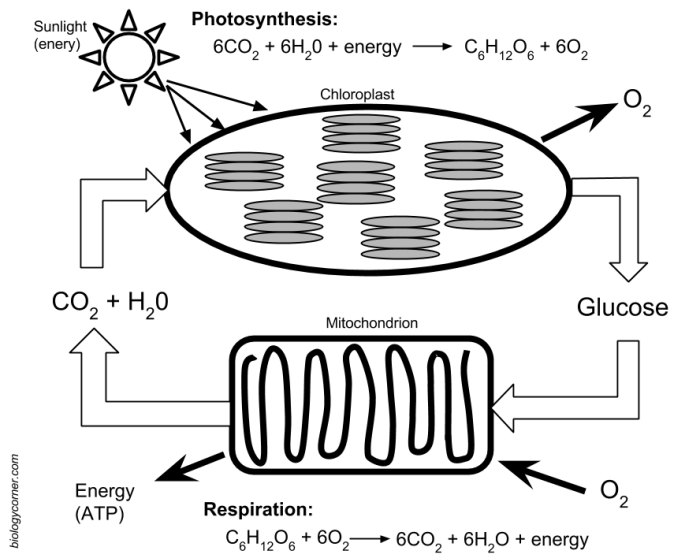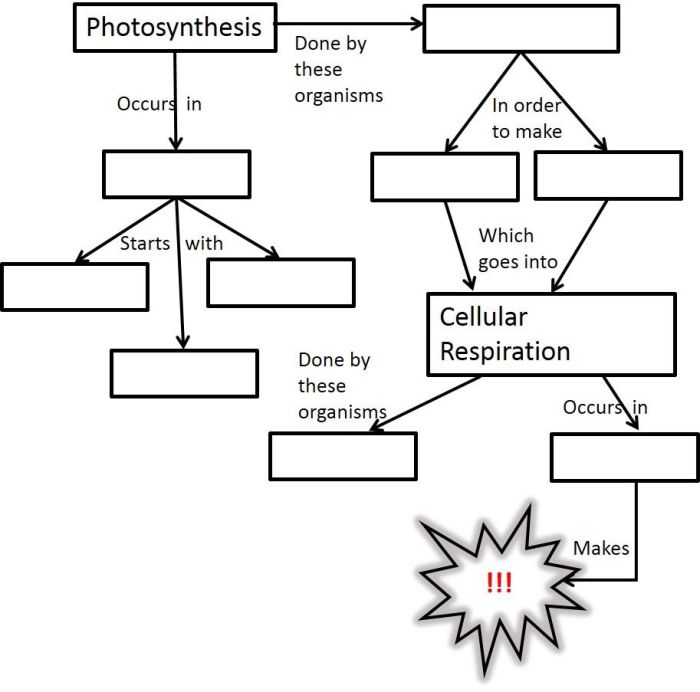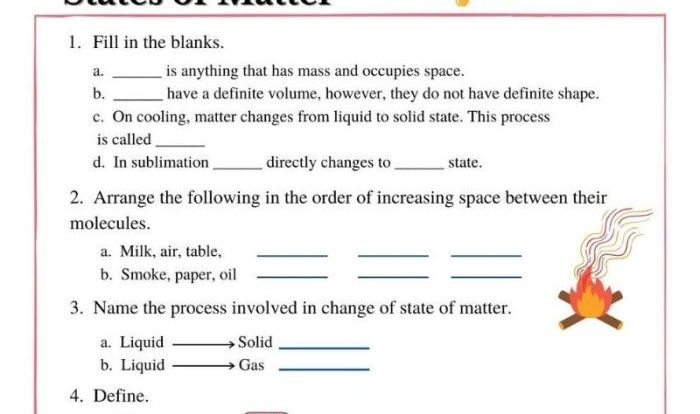Embark on a journey of discovery with the photosynthesis diagram worksheet with answers, a comprehensive resource that unveils the intricate process of photosynthesis. This guide delves into the fundamental concepts, key components, and interactive exercises, empowering students and educators alike to grasp the essence of this vital biological process.
Through a meticulously crafted diagram, students will visualize the photosynthetic pathway, from the absorption of light energy to the synthesis of glucose. Accompanying questions and answer keys foster a deeper understanding of the chemical reactions and physiological adaptations involved in photosynthesis.
Photosynthesis Process Overview: Photosynthesis Diagram Worksheet With Answers

Photosynthesis is a vital biological process that converts light energy into chemical energy, which is stored in the form of glucose. This process occurs in plants, algae, and certain bacteria and is essential for the survival of most life on Earth.
The overall process of photosynthesis can be summarized by the following equation:
6CO 2+ 6H 2O + light energy → C 6H 12O 6+ 6O 2
In this equation, carbon dioxide (CO 2) and water (H 2O) are used to produce glucose (C 6H 12O 6) and oxygen (O 2) in the presence of light energy.
Light energy is captured by chlorophyll, a green pigment found in the chloroplasts of plant cells. This energy is then used to split water molecules into hydrogen and oxygen atoms. The hydrogen atoms are then used to reduce carbon dioxide into glucose, while the oxygen atoms are released as a byproduct of photosynthesis.
Photosynthesis Diagram Structure, Photosynthesis diagram worksheet with answers
The following diagram illustrates the key components and steps involved in the photosynthesis process:
[Diagram photosynthesis yang berlabel]
- Chloroplasts:Organelles within plant cells that contain chlorophyll and are the site of photosynthesis.
- Chlorophyll:A green pigment that absorbs light energy and initiates the photosynthesis process.
- Stomata:Pores on the surface of plant leaves that allow for the exchange of gases, including the intake of carbon dioxide and the release of oxygen.
- Light energy:The energy from sunlight that is captured by chlorophyll and used to drive the photosynthesis process.
- Carbon dioxide (CO2): A gas that is taken in by plants through the stomata and used to produce glucose.
- Water (H2O): A molecule that is split into hydrogen and oxygen atoms during photosynthesis. The hydrogen atoms are used to reduce carbon dioxide into glucose, while the oxygen atoms are released as a byproduct.
- Glucose (C6H 12O 6): A sugar molecule that is the end product of photosynthesis and serves as a source of energy for plants.
- Oxygen (O2): A gas that is released as a byproduct of photosynthesis and is essential for the survival of most life on Earth.
Photosynthesis Worksheet Development
A comprehensive worksheet based on the photosynthesis diagram can be used to test students’ understanding of the process. The worksheet should include questions that cover the following topics:
- The overall process of photosynthesis
- The role of light energy in photosynthesis
- The chemical reactions involved in photosynthesis
- The key components of the photosynthesis process
The worksheet should also include answer keys to facilitate self-assessment.
Classroom Implementation Guide
The photosynthesis diagram and worksheet can be used in a classroom setting to enhance student learning. The following steps provide guidance on how to implement these resources effectively:
- Introduce the photosynthesis process:Begin by reviewing the overall process of photosynthesis and its importance for life on Earth.
- Display the photosynthesis diagram:Show students the labeled diagram and explain the key components and steps involved in photosynthesis.
- Distribute the photosynthesis worksheet:Have students complete the worksheet individually or in small groups to test their understanding of the process.
- Review the worksheet answers:Go over the answers to the worksheet questions with the class, clarifying any misconceptions and reinforcing key concepts.
- Engage in discussions:Facilitate discussions about the importance of photosynthesis, its applications, and any related environmental issues.
- Assess student learning:Use the worksheet and class discussions to assess students’ understanding of the photosynthesis process and make adjustments to instruction as needed.
Enrichment Activities
To supplement the photosynthesis diagram and worksheet, consider incorporating the following enrichment activities:
- Interactive simulations or animations:Use online resources or software to demonstrate the photosynthesis process in a visually engaging way.
- Videos or online articles:Provide students with links to videos or articles that provide further exploration of photosynthesis and related topics.
- Hands-on experiments:Conduct experiments that allow students to observe the effects of light, carbon dioxide, and water on the photosynthesis process.
FAQ
What is photosynthesis?
Photosynthesis is the process by which plants and other organisms use sunlight to convert carbon dioxide and water into glucose and oxygen.
What are the key components of the photosynthesis diagram?
The key components of the photosynthesis diagram include chloroplasts, chlorophyll, stomata, and the light-dependent and light-independent reactions.
How can I use the photosynthesis worksheet in my classroom?
The photosynthesis worksheet can be used as a teaching tool to introduce the concept of photosynthesis, as a review activity, or as an assessment tool.

